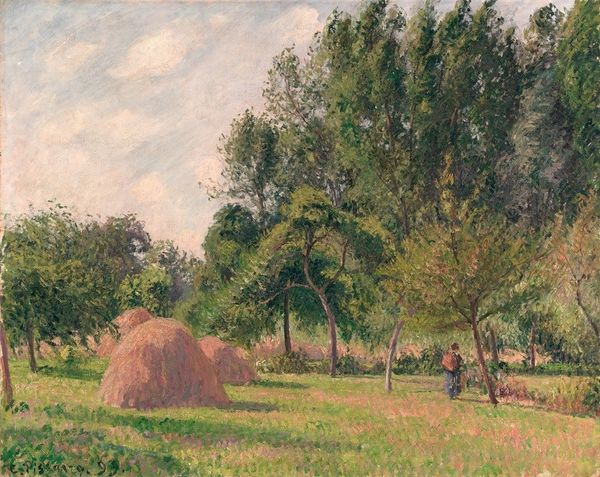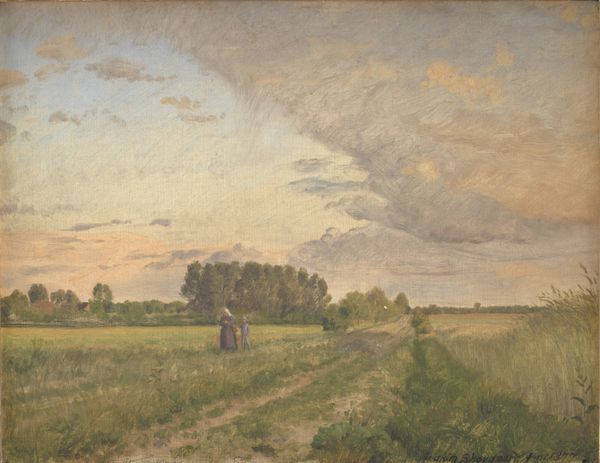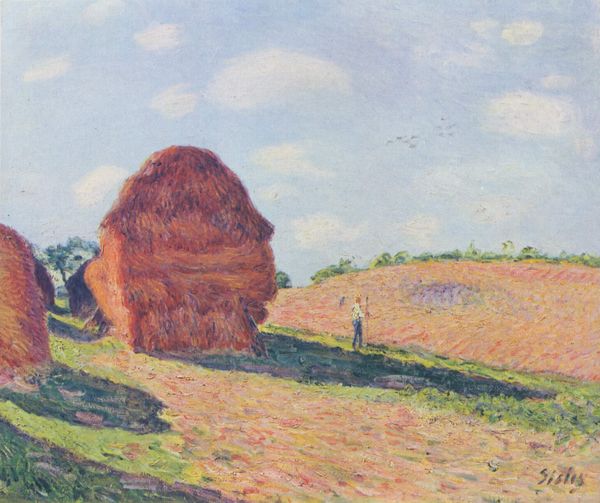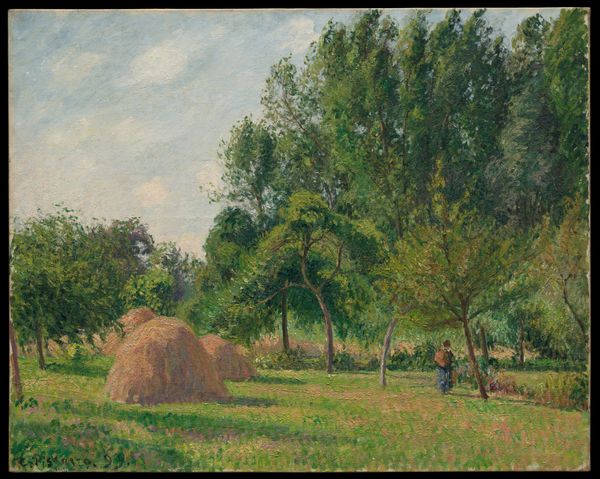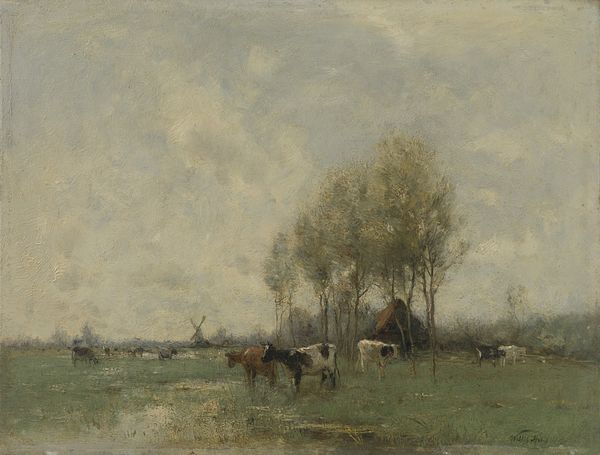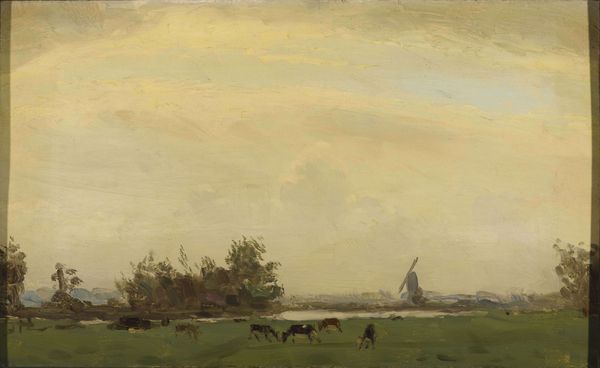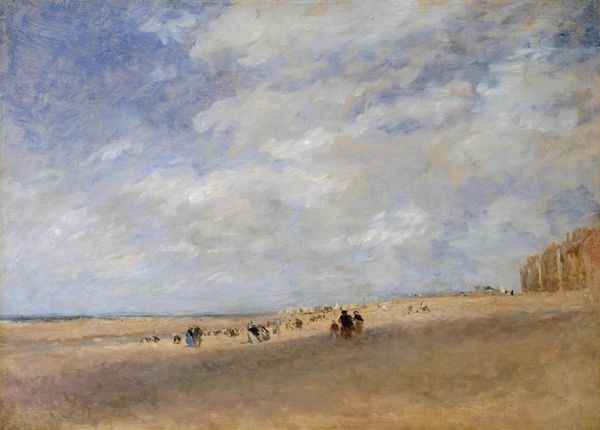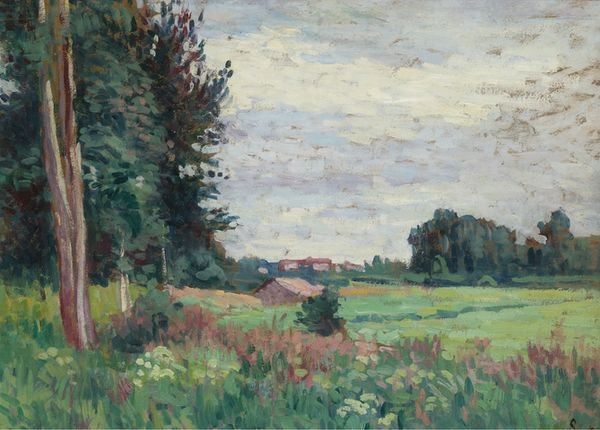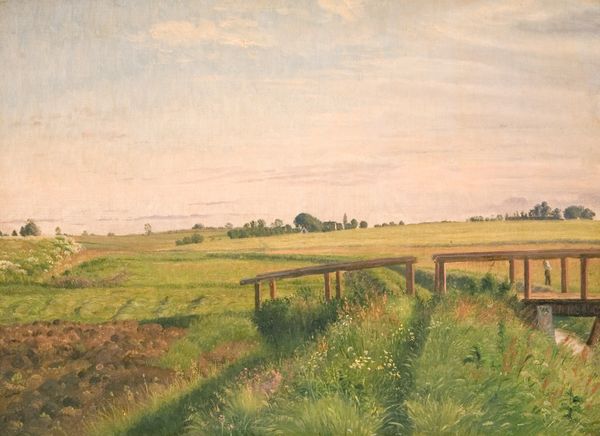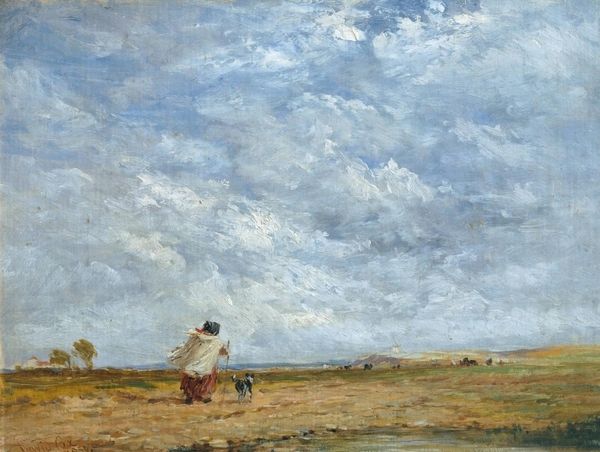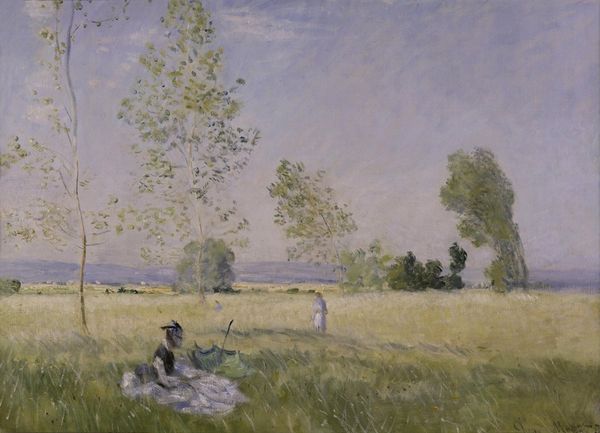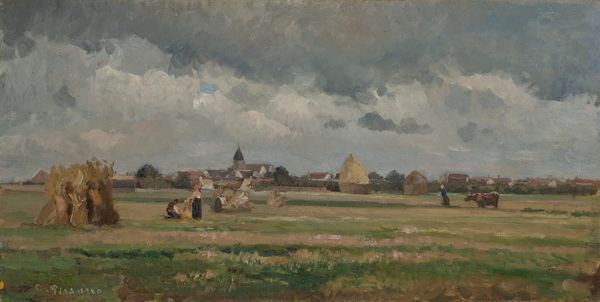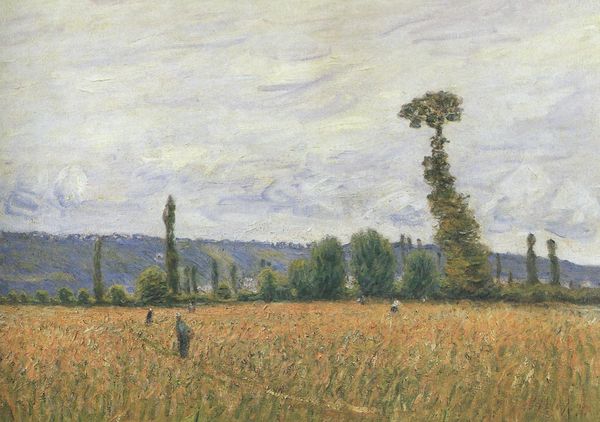
painting, plein-air, oil-paint
#
painting
#
impressionism
#
plein-air
#
oil-paint
#
landscape
#
oil painting
#
genre-painting
#
realism
Dimensions: overall: 36.83 × 53.34 cm (14 1/2 × 21 in.) framed: 53.98 × 70.8 × 4.45 cm (21 1/4 × 27 7/8 × 1 3/4 in.)
Copyright: National Gallery of Art: CC0 1.0
Editor: This is Camille Pissarro's "Landscape, Ile-de-France," painted in 1873, using oil on canvas. It's got this open, airy feeling, but I’m also struck by how much the scene seems carefully arranged. What’s your perspective on this work? Curator: It's crucial to consider this piece within the framework of industrializing France. How does Pissarro portray labor, not in factories, but within an agrarian landscape about to be transformed? Notice the emphasis on haystacks – these aren't just picturesque forms, but signs of harvested wealth, material for consumption, fuel perhaps, or feed for livestock. Editor: That makes me see it differently. So the haystacks are almost stand-ins for… productivity? Is it celebrating that productivity or critiquing it? Curator: Precisely! And it's a complicated question. The broken brushstrokes, typical of Impressionism, also disrupt a purely celebratory reading. The paint itself draws attention to the means of representation. Think about the implications of painting "en plein air," directly in the landscape. What kind of labor does that entail, and how does that differ from studio painting? Editor: It's much more immediate, right? More about capturing the experience of labor. How does the application of paint here make the mundane act of hay harvesting into something almost heroic? Curator: Well, does it make it heroic or does it show the actual, physical *labor*? Pissarro is also very consciously flattening out any classical idea of beauty and hierarchy here; think of earlier landscape painters’ focus on grand vistas and idealized forms of farming; his gaze stays at ground level, attuned to the material realities. Editor: I see that now! It's less about romanticizing the countryside and more about showing the sheer, physical act of reaping and storing. It definitely gives the scene more weight. Curator: Absolutely. Pissarro isn't offering us an escape; he's asking us to look at how the land is used and what that means for the people tied to it, emphasizing both the beauty and difficulty. Editor: This painting has more layers than I initially thought! Thinking about the materials and social context completely shifted my interpretation. Thanks for pointing that out.
Comments
No comments
Be the first to comment and join the conversation on the ultimate creative platform.
